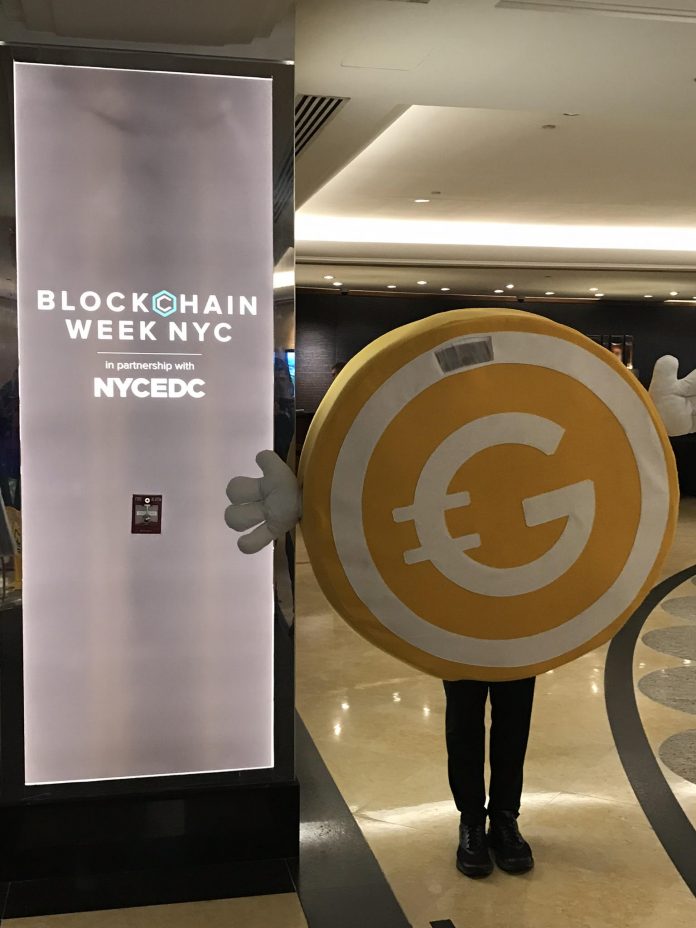With Bitcoin’s price sharply increasing over in the run up the buzz at Consensus – Blockchain Week’s flagship conference in New York – was palpable. With the Ethereum-focused Ethereal conference and the ETH NYC hackathon sandwiching the Consensus conference, there was a noteworthy element of bitcoin maximalism amongst the 4,000 attendees this year.
While the number of attendees was down from last year, the attendee base has seemingly transitioned from crypto traders to those that are actively working in the industry. As such the mantra from last year – “so what coin are you bullish on?” has become “so what are you working on?”
Bitcoin has been in the throes of a bear market since it reached all-time highs in December 2017, a downtrend reflected across the entirety of the crypto space. Standing tall at over $20,000 at its peak, Bitcoin reached lows of $3200 only a year later. When it broke $6000 (for the first time in 2019) on March 6th, in the run-up to blockchain week, the bearish sentiment permeating the space seemed to wash away as price rallied past $7000 to a high of $8386. It bounced back from an initial correction to $7,000, and now sits just above $8,000 at time of writing.
Charles Hoskinson, co-founder of Cardano and Ethereum, whilst speaking to the press about Cardano’s new partnership with Polymath, was predictably asked about the cause of the bitcoin price surge. While raising both hands in the air, he exclaimed, “If I knew that, I’d be a traitor.”
As always, it’s difficult to ascertain what could have led to this rally. Historically, it seems to hold true that the run-up to Blockchain Week is correlated with an increase in value of cryptocurrencies, but to attribute a jump of over 50% in the past month to a handful of conferences would be to overlook a number of seemingly significant factors.
The bull run of 2017 may have been premature, given the relative lack of infrastructure. Since then, though, it seems the bulk of the talent in the space has been focused on fleshing it out – not only at the technological level, but in retail solutions for buying, selling or accepting cryptocurrencies. It has never been easier for individuals to purchase Bitcoin and other cryptocurrencies (undoubtedly an important consideration where FOMO buying is concerned).
The Tether scandal has also likely pushed some holdings from exchanges to bitcoin. There’s also the possibility that the renewed interest in Bitcoin falls in line with the ‘safe haven’ narrative. A large part of its appeal stems from the idea of an asset detached from the incumbent financial system, something that resonates with those seeking digital gold amid socio-political turmoil and a poorly-performing stock market – the recent China tariffs debacle has shown just how fragile the link between the two is.
The entrance of legacy financial heavyweights has been long anticipated – CBOE futures were launched and subsequently cancelled, ETF proposals continue to be delayed – but it appears that, finally, they’re gaining traction. With 2019 being a year less focused on fund-raising, the focus turned to product development, or what has been affectionately referred to as #BUIDL, with a nod to the favorite slang of the industry – HODL.
Following the April squabbling between the Bitcoin & Bitcoin Cash communities prior to Blockchain Week (which, it was evident, the crowd on a whole has grown very tired of), there was a refreshing message of unity that resonated throughout the panels. This was reflected in the panel CryptoLend-o-Mania, where Peter McCormack moderated a discussion organized by crypto-backed lending pioneer, SALT Lending, it brought Celsius, Nexo, BlockFi and Cred onto the same stage to break down their product differentiators and the evolution of the crypto lending market.
Despite a yellow card flashed by Peter McCormack to Celsius CEO, Alex Mashinsky, for excessive talking (nobody was surprised), the consensus on the panel was that “a rising tide lifts all boats“, with the speakers favoring collaboration over competition. Another Consensus panel brought together four stablecoin projects on the same stage and a productive discussion about the varying approaches from executives from Sila, TrustToken, Reserve and Paxos was the result.

There was barely a murmur about ICOs this year – the industry has long since moved on to STOs, though it should be noted that there was a distinct lack of agreement regarding their current state of STO offerings. “The frustration with Security Tokens is not a technological issue, it’s a regulatory issue,” remarked Charles Hoskinson. Senior Advisor for Digital Assets and Innovation at the SEC, Valerie Szczepanik, was unable to demystify the state of STO offerings in the eyes of the SEC in her fireside chat, reinforcing the reality that regulation is still hampering the growth of the blockchain and crypto industry.
Regardless of the cause of the resurgence of bitcoin and altcoins, the conference was certainly fueled by excitement for the end of the bear market. While startups are still using Consensus as a platform to launch new companies, there was a lack of killer announcement to thrill the audience, with established names instead taking the opportunity to inform attendees of progress, partnerships and mainnet releases.
There were less costumes and onesies this year, but one costume – a gold coin mascot parading the entrance to the Consensus conference – received a shoutout from 2020 Presidential candidate Andrew Yang, as he discussed his vision closing out Day 3. “If I’m in the White House, oh boy are we going to have some fun in terms of the cryptocurrency community,” which was predictably meet with a great cheer from the audience. A bullish way to end Consensus.





